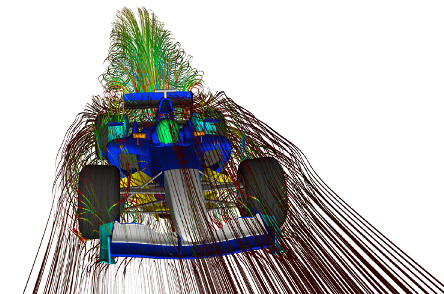Why is Aerodynamics important in Car Tuning?
By Shenron on Feb 05, 2007 with Comments 1
The concept of aerodynamics in the design of a moving vehicle seems to pique car enthusiasts to no end. While this has contributed much to the innovation of those sleek, sophisticated and smooth exteriors that is prevalent in today’s sports cars, sedans, pickup trucks, SUV’s and even with the sub compact class; aerodynamics is in fact critical to the overall performance and handling of a vehicle. That is the reason why the car tuning industry in general is keen towards the aerodynamic structure of a car; with many F1 drivers and racing aficionados “body tuning” their coupes, not only to personalize the car’s body and appearance, but also to improve its aerodynamic performance.
What sets apart an aerodynamically suited vehicle from the average car is the lightweight casing and the non-air resistive body design that promote increased road holding, cornering and speed while reducing energy consumption; making it more fuel efficient, especially when driving at ballistic speeds. At velocities of 100 miles per hour or more, when cars are not aligned aerodynamically, a lot of mishaps can happen on the road. First, wind head-on slows the car down, so you need a lot more power to maintain speed. Second, cars tend to float at high speed, giving the car less traction on the wheels, to diminish the driver’s capability to maneuver the vehicle effectively.
Aerodynamics was not a factor when the Ford Model T came into production in the early 1900’s given the car’s design speed of only 30 mph. But as the automotive industry progressed, engines were made smaller and more powerful, bodies were built lighter, car velocity increased to over 200 mph and given the buyers’ increasing penchant for safety and ease, frills were then added to make driving more comfortable. Much has been established up to the first decade of the new century. Expect more innovations to awe car buyers at the turn of the century
Car designing requires a reasonable amount of science and logic. If we allow body shape to govern the design, this will create setbacks in gas consumption. Should mileage be made a priority, the car might not hold the necessary appeal and looks sought after by buyers. Add-on features have been devised to balance inconsistencies in the aerodynamic design of modern day vehicles, with most of these created to enhance the appearance of the car. Examples of these are the inverted wing that is used to generate downforce and stabilize cars at high speeds; diffusers, spoilers, canards, side skirts, side ducts, air dams and splitters were all designed to improve the car’s performance. New car models are already outfitted with these modifications, so buyers’ need not attach additional supplementary devices.
Filed Under: General

mouse trap cars are so cool i really like them and alexm really likes the montreal canadiens